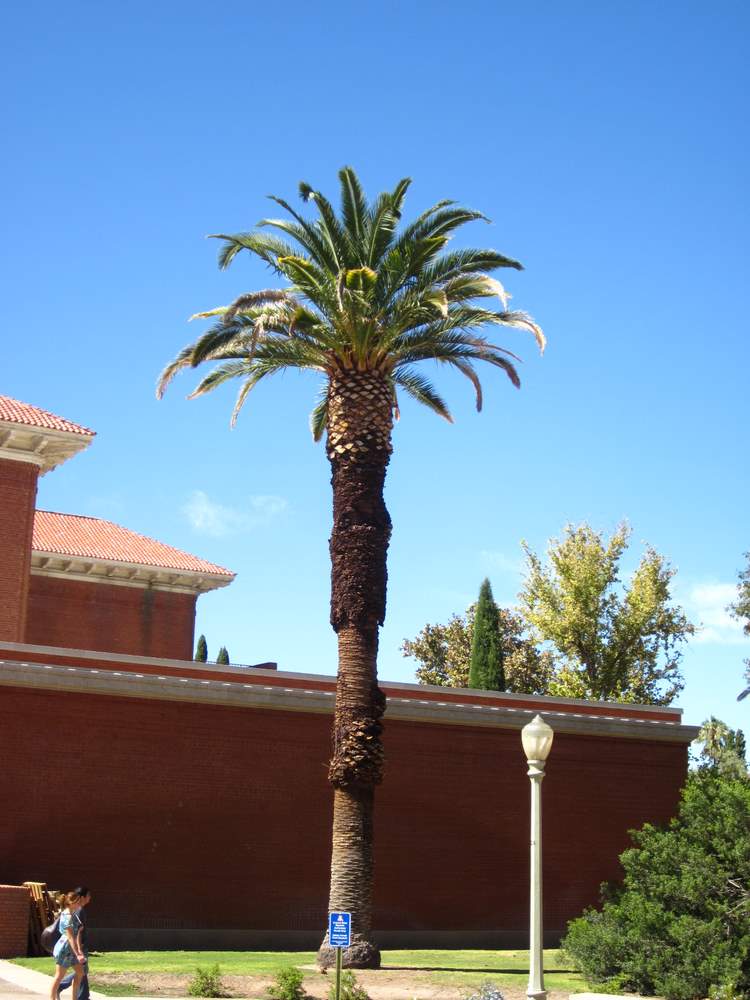Phoenix
|
Family: Arecaceae |
Stems solitary or clustered, erect or ascending [subterranean], slender to massive, often clothed in old leaf bases. Leaves: sheath fibers soft; petiole not split at base, armed, base not split, not forming crownshaft; blade pinnate; plication induplicate; segments lanceolate, in 1 or more planes; apices acute; basal segments modified into stout spines. Inflorescences axillary within crown of leaves, paniculate, ascending, much shorter than leaves, with 1 order of branching, alike in staminate and pistillate plants; prophyll often caducous, conspicuous, becoming boat-shaped, short; peduncular bracts absent; rachillae glabrous. Staminate flowers borne singly along rachillae; calyx cupulate, 3-lobed; petals 3, free, valvate; stamens 6, free; pistillode inconspicuous or absent. Pistillate flowers borne singly on rachillae; calyx cupulate, 3-lobed; petals 3, imbricate, free; staminodial ring cupulate or deeply 6-lobed; pistils 3 (only 1 developing), distinct; stigmas small. Fruits drupes, berrylike, fleshy; exocarp blackish brown, smooth; mesocarp fleshy or fibrous; endocarp papery. Seeds 1, elongate; endosperm homogeneous; embryo lateral [basal]; eophyll undivided, lanceolate. xn = 18. Several species of Phoenix are cultivated as ornamentals in Florida and California, although identification can be difficult since because the species are dioecious and apparently hybridize with great ease. Phoenix dactylifera Linnaeus, the date palm, is grown as a commercial crop in southern California and Arizona and as an ornamental palm in Florida, but it seems noninvasive. It can be recognized by its massive trunk (eventually bearing basal offshoots) and its stiff, ascending, glaucous leaves. In Florida, P. roebelenii O'Brien (pygmy date palm), with its solitary trunk less than 15 cm in diam., is also cultivated as an ornamental although it does not seem to escape. Other species of Phoenix are occasionally cultivated in warm parts of the United States. Elements of cultivated species of Phoenix entering the flora may be of uncertain parentage. Two species, Phoenix canariensis and P. reclinata, have escaped and are sporadically naturalized in southern Florida and, to a much lesser extent, in California. Phoenix dactylifera is reportedly naturalized in California (E. McClintock 1993), but I have seen no specimens.
|

